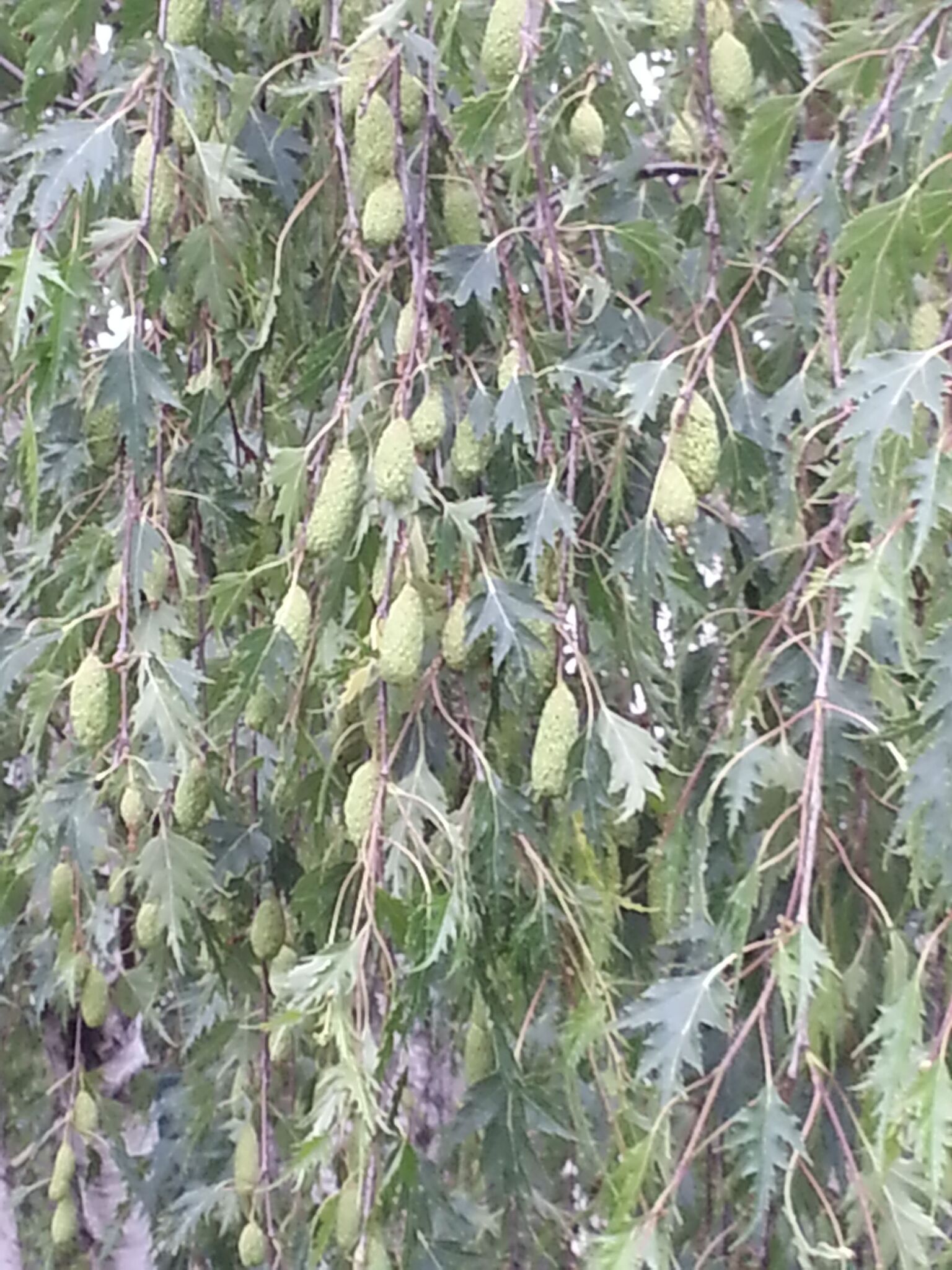
Tree to about 15 m tall or so, occasionally multistemmed. Bark silvery white, rarely peeling freely, black and fissured in older trees and at the base of trunk of young trees. Branchlets brown, slender, strongly pendulous, hairless, with resinous glands. Leaves more or less triangular to rhombic mostly 3-6 cm long, base variable, wedge shaped to near cordate, tip tapering to a point, shiny above, doubly toothed, mostly 5-6 pairs of veins, yellow in autumn. Leaf stalk slender, 2-3 cm long. Flowers in early spring. Female catkins 2-3 cm long. [B. alba L. in part, B. verrucosa Ehr.]
Europe, W Asia
The name B. alba L. was once used for the Silver Birch but is now considered to apply in part to this species and in part to B. pubescens Ehrh.
Several rare cultivars are offered in specialist nurseries, these include: 'Trost's Dwarf', a dwarf, slow-growing plant with finely cut leaves; 'Wade's Golden' with yellowish twigs and rich autumn colour; 'Glenella' with leaves yellowish at first; 'Moss White' a white trunk selection.
Young shoots and other parts hairless (hand lens) but with resin glands. The only birch with long, thin pendulous branchlets. The closely related British birch Betula pubescens is mostly hairy on the branchlets and without resin glands, also it does not have prominent primary teeth at the tips of the leaf veins. Hybrids between these species may have both glands and hairy twigs.
ACT: Acton (Royal Canberra Hospital North); Griffith (Mitchell St). VIC: Ballarat (Ballarat Botanical Gardens); Dandenongs (Alfred Nicholas Memorial Garden; RJ Hamer Arboretum); Daylesford (Wombat Hill Botanical Gardens ); Hamilton (Hamilton Botanic Gardens).
Source: (1997). Betulaceae. In: . Horticultural Flora of South-eastern Australia. Volume 2. Flowering plants. Dicotyledons. Part 1. The identification of garden and cultivated plants. University of New South Wales Press.

Tall tree with deeply cut, irregularly lobed leaves 4-8 cm long with a lanceolate central lobe. Leaf stalk longer than in species. ['Laciniata']
This cultivar was used in groups as a feature of the style of Victorian garden designer Edna Walling.
First found in S Sweden in the forest at Lilla Ornaes, Dalecarlien.
Vic:Colac (Colac Botanic Gardens); Dandenongs (RJ Hamer Arboretum, planted 1978).
Fastigiate, columnar habit with upright branches held close to the trunk, twigs twisting. ['Pyramidalis']
Distributed from France before 1870.
Vic: Burnley (The University of Melbourne Burnley Campus); Burwood (Wattle Park near Chalet); Daylesford (Wombat Hill Botanical Gardens ); Emerald (Nobelius Heritage Park, about 5 m in 1983).
Frequently placed in synonymy, mostly with 'Dalecarlica' but described as having leaves less deeply incised, also thick male catkins and long pendulous twigs.
In winter the vegetative buds of 'Laciniata' are pointed, those of 'Dalecarlica' blunt and rounded.
This cultivar does not appear to be in SE Australia where all cut-leaf cultivars are best placed in 'Dalecarlica'. However, there does appear to be some confusion over the application of the cultivar names 'Dalecarlica' and 'Laciniata'.
A rather small tree with an open growth habit. Leaves purplish-red when young but the colour deepening with age; margin more regularly doubly toothed than in the species; colouring a deep coppery red in autumn.
Raised at Transon's Nursery, Orleans, France c. 1870.
Daylesford (Wombat Hill Botanical Gardens, 7 m in 1983); Dromana ('Seawinds' 5 m in 1980); Emerald (Nobelius Heritage Park, 6 m tall in 1983).
A tall tree with widely arching branches and a single, straight trunk.
Known since 1867.
A strongly weeping habit and domed crown with long, thin, pendulous twigs; leaves more or less triangular, double-toothed.
Traditionally grafted to form an umbrella-shaped small tree (sometimes on to B. platyphylla var. japonica for the white bark).